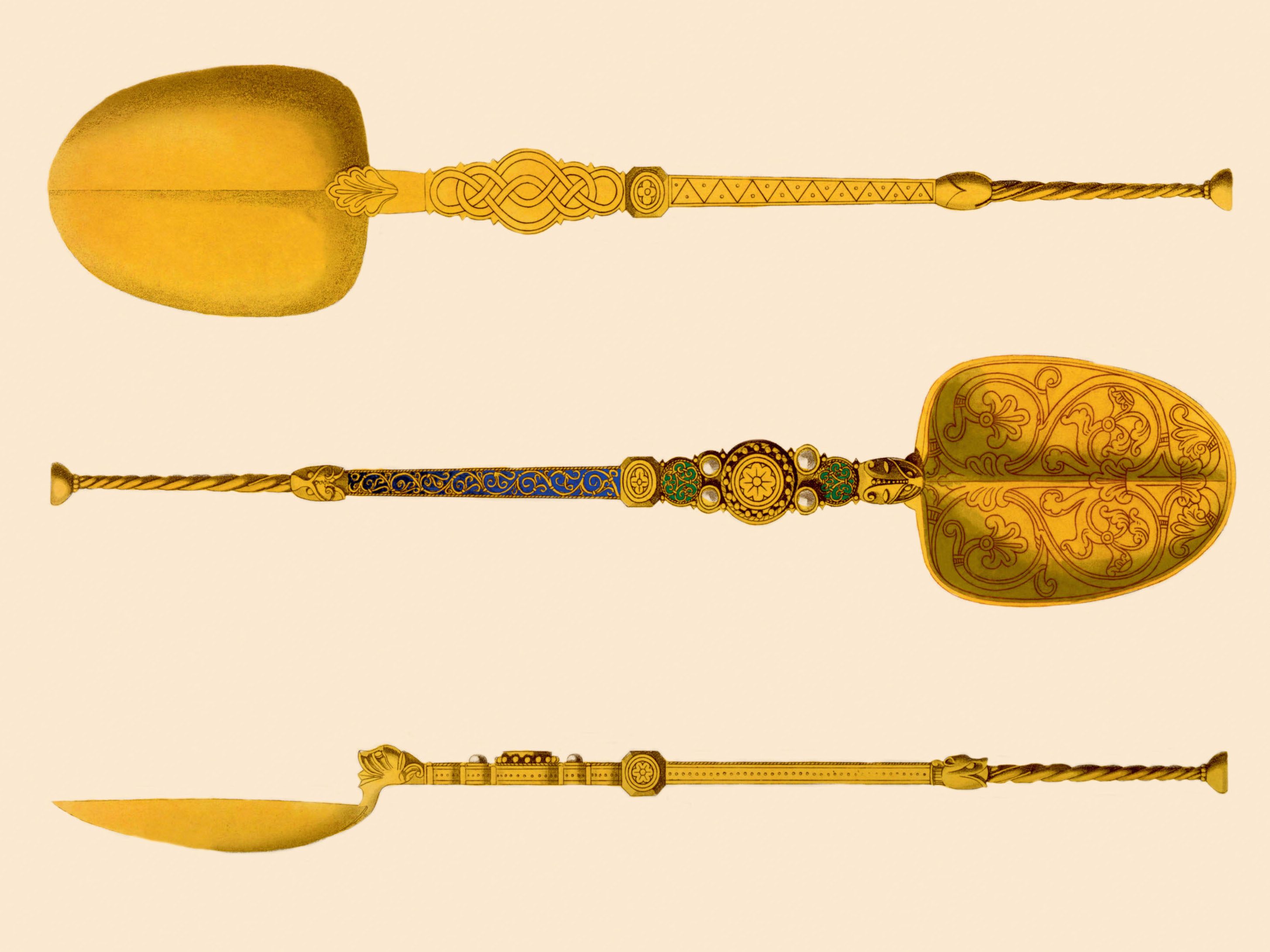The Oldest Object in England’s Crown Jewels Is a Spoon
Most of the coronation regalia were destroyed in the 17th century, but the anointing spoon survived.

One of the strange things that humans do with their minds is invest physical objects with symbolic meaning that gives those objects enormous power. For example, the Crown Jewels of the United Kingdom, made from gold, set with enormous jewels, are revered not because of the materials they’re made of but because of what they represent—the earthly and spiritual power of the monarch.
Usually, these objects are kept hidden safely away, but on Sunday, January 14, as part of a series on the Royal Collection, the BBC aired footage that shows these objects in close-up detail, marking the first time they’ve ever been filmed.
The Crown Jewels include a couple of crowns, which, The New York Times notes, cannot be viewed or filmed from above “because that is the vantage point reserved for God;” the Sovereign’s Orb, a gold sphere adorned with bands of emeralds, rubies, sapphires, diamonds, and pearls, which represents the Christian world and the three continents known in the Middle Ages; and a set of jewel-encrusted swords. Most of these objects were made in the 1660s, but one piece of the coronation set, the Coronation Spoon, dates back much further, to the 12th century.
Starting with Edward the Confessor, one of England’s last Anglo-Saxon kings, a set of coronation regalia passed from ruler to ruler, until 1649 when the monarchy was abolished at the outset of the Commonwealth of England, a brief period when England was a republic. The new government removed the jewels from the coronation regalia, melted most of it down, and sold the rest to raise money.
In this hubbub, a Mr. Kynnersley, a Yeoman of Charles I’s Wardrobe, bought the spoon for 16 shillings.
The existence of the spoon was first recorded in 1349, but even then it was considered “of antique forme.” A silver spoon gilt with gold, it’s decorated with ornate scrolls and monster’s heads and thought to date back to the second half of the 12th century, when some of the most famous kings of England, including Richard the Lionheart, lived. The spoon may have originally been used to mix water and wine; in 1603 it was first used to anoint a monarch in James I’s coronation ceremony.
Anointing a monarch with holy oil once confirmed the ruler’s divinity; in England, the practice dates back to around 9th century, but the tradition, as the Royal Collection says, derives from the anointing of the Jewish king Solomon by Zadok the Priest and Nathan the Prophet.
When the British monarchy was re-established in 1661, the state recreated the crowns and other objects that had been destroyed, and Mr. Kynnersley returned the Coronation Spoon to the new king, Charles II. At that time, the spoon received extra decoration—small pearls lining the handle. Since then it’s been used in the coronation ceremonies for English monarchs, who are no longer considered divine themselves but do have an important religious role to play as the head of the Church of England. Many monarchies have abandoned the practice of elaborate coronation ceremonies, but the United Kingdom has stuck with this medieval ritual and the objects that go along with it.























Follow us on Twitter to get the latest on the world's hidden wonders.
Like us on Facebook to get the latest on the world's hidden wonders.
Follow us on Twitter Like us on Facebook